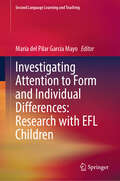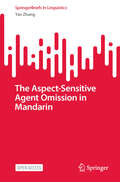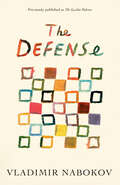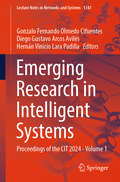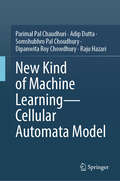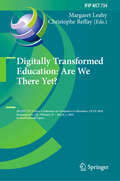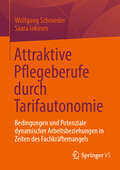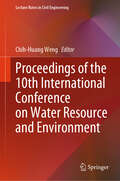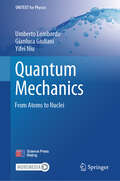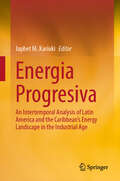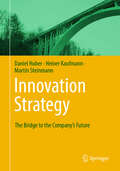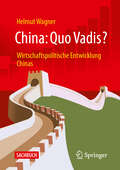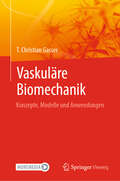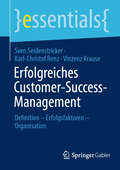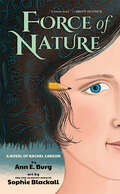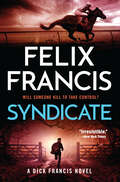- Table View
- List View
Investigating Attention to Form and Individual Differences:Research with EFL Children (Second Language Learning and Teaching)
by María del Pilar García MayoThe teaching of the grammar of a second/foreign language has always been an issue that different teaching methods have considered. Studies in the field of second language acquisition (SLA) have shown that mere exposure to meaningful second language input is not enough for learners to reach proficiency in the target language. At beginner proficiency levels, learners tend to rely on lexical items instead of grammatical form to obtain meaning. Recent research has pointed out the need for effective grammar pedagogy in foreign language environments, in which the exposure to the language being learned is limited.The present book presents a selection of eleven empirical papers dealing with children's attention to formal aspects of the language they are learning, and some of them consider the impact of individual differences on the learning process. Each of the studies reported in the individual chapters is based on a solid theoretical background and an overview of studies in the corresponding research area.
The Aspect-Sensitive Agent Omission in Mandarin (SpringerBriefs in Linguistics)
by Yan ZhangThis open access book aims to provide an explanatory account for the phenomenon of absent external arguments in Mandarin Chinese. It starts from the observation that although expletivizing an agent is considered impossible cross-linguistically, it is possible in Mandarin. To account for this exceptional behavior, it proposes the M parameter, which suggests that English and Chinese differ in whether the agentive entailments of the root are grammatically codified in selection for the feature [+m]. While the M parameter provides a grammatical basis for when omission of the external argument is possible in a given language, this book argues that expletivization in general is subject to a variant of the Proper Containment Condition (Rappaport Hovav and Levin, 2012), which is dubbed the Aspectual Proper Containment Condition (APCC). The APCC is concerned with the relation between the interval yielded by aspect and the situation in the speaker/hearer’s mental model that obtains during that interval. It requires that the external argument be eliminated if and only if its referent does not participate in the situation in the mental model during that interval. This open access book demonstrates that in the vast majority of cases the APCC correctly predicts agent omission in Mandarin sentences containing one of the four aspectual markers (-zai, -zhe, -le, and -guo), with a few exceptions where additional restrictions are at play.
The Luzhin Defense (Vintage International)
by Vladimir NabokovNabokov's third novel, The Luzhin Defense, is a chilling story of obsession and madness. As a young boy, Luzhin was unattractive, distracted, withdrawn, sullen--an enigma to his parents and an object of ridicule to his classmates. He takes up chess as a refuge from the anxiety of his everyday life. His talent is prodigious and he rises to the rank of grandmaster--but at a cost: in Luzhin' s obsessive mind, the game of chess gradually supplants the world of reality. His own world falls apart during a crucial championship match, when the intricate defense he has devised withers under his opponent's unexpected and unpredictabke lines of assault.
Alles ist Ökologie
by Mark MaraunDie Idee des Buches ist es zu zeigen, dass Ökologie keine Teildisziplin innerhalb der Naturwissenschaften ist, sondern große Bedeutung für alle Bereiche unseres Lebens hat. Überall wo Organismen interagieren (und das ist ja quasi überall der Fall) gelten die Prinzipien der Ökologie - nur welche sind das überhaupt?
Automated and Autonomous Navigation Powered by GNSS: Navigation Techniques and Applications, Future Automated Navigation
by Mauro CardoneThis book is the result of one-year investigation in all the available technologies necessary to build an efficient navigation system usable on rovers moving on the ground and at the sea, centered on GNSS (Global Navigation Satellite System). It is used as instruction note for the calls for tender in the Italian Space Agency. It targets the applications of automated and autonomous navigation for the following types of rover: trains at level 2 of ERTMS/ETCS—autonomous cars, starting from level 3 of SAE -MASS (Maritime Autonomous Surface Ships) at level 4 of IMO. The material is already edited for the using of professionals and engineers who need to build a navigation system on top of COTS hardware. The topics cover in a thorough view all the necessary subjects to build an efficient positioning system for the rover enabling coping with all kind of environments and all interferences and always warranting a minimum level of the positioning KPIs (reliability, availability, integrity, and accuracy). The localization system built according to these guidelines will be ready to be certified and the product will be at TRL 6 (i.e., technology demonstrated in the relevant environment).
Emerging Research in Intelligent Systems: Proceedings of the CIT 2024 - Volume 1 (Lecture Notes in Networks and Systems #1347)
by Gonzalo Fernando Olmedo Cifuentes Diego Gustavo Arcos Avilés Hernán Vinicio Lara PadillaThis book presents the proceedings of the XIX International Multidisciplinary Congress on Science and Technology (CIT 2024), held virtually from October 21 to 25, 2024. It showcases cutting-edge research and innovative solutions across various disciplines, including Artificial Intelligence, Computational Modeling, Software Engineering, and Security. Additionally, it covers broader scientific domains such as Computer Science, Earth and Construction Sciences, Basic Sciences, Electrical and Electronics Engineering, Telecommunications, and Energy and Mechanical Sciences. It is designed for researchers, postgraduate students, and educators, serving as a fundamental reference for advancing knowledge, a valuable academic resource, and a practical guide for industry professionals; by fostering collaboration between academia and industry, it promotes innovation, facilitates interdisciplinary exchange, and contributes to solving global challenges in science and technology.
New Kind of Machine Learning–Cellular Automata Model
by Adip Dutta Dipanwita Roy Chowdhury Parimal Pal Chaudhuri Somshubhro Pal Choudhury Raju HazariThis book introduces the CAML model, a novel integration of Cellular Automata (CA) and Machine Learning (ML), designed to deliver efficient computation with minimal training data and low computing resources. CAML operates through two key perspectives: one where CA is enhanced by ML to handle complex non-linear evolution, and another where CA strengthens ML by leveraging linear CA evolution to process linear functions effectively. The book focuses on real-world applications of CA, such as in Computational Biology, where CAML models protein chains to predict mutations linked to human diseases, using carefully designed CA rule sequences for each amino acid. Another significant application is in multi-language Sentiment Analysis, where the model analyzes text in five languages (Hindi, Arabic, English, Greek, and Georgian), without relying on pre-trained language models. CAML uses CA rules for Unicode character modeling, offering a transparent, interpretable prediction algorithm. Overall, CAML aims to drive industrial and societal applications of CA, with an emphasis on transparent results and efficient hardware design through CA’s regular, modular, and scalable structure.
Sand, Sequins & Silicone (The Starlight Series)
by Pia MiaSand in my toes, wind in my hair, and my friends by my side . . . What more could I ask for?Princess came to LA to make something of herself, to share her music, and find real love . . . She’s got an amazing squad of friends and a certain blue-eyed man who she can’t get out of her head. With a new single just released, everyone wants a piece of her: party invitations, paparazzi, and custom couture dresses abound. She’s living her California dream.But Hollywood isn’t exactly what she thought it would be. Behind closed doors, there’s lies and loneliness disguised by smiles and laughter. It’s hard to know who to trust, or what’s fake and what’s real. Princess just wants success—on her own terms—but needs to make sure she doesn’t lose herself in the process.This juicy debut novel by international recording artist Pia Mia is an intimate, insider peek at the ups and downs of fame in the music industry, told from the point of view of an up-and-coming pop star.
Einführung in die Technische Chemie
by Arno Behr David W. Agar Jakob Jörissen Andreas J VorholtTechnische Chemie für Einsteiger ... komprimiert, klar, lernbar Dieses kompakte Einführungslehrbuch vermittelt die wesentlichen Grundlagen der Technischen Chemie. Es richtet sich in erster Linie an Studierende der Chemie sowie des Chemie- und des Bioingenieurwesens und setzt lediglich Grundkenntnisse in Organischer, Anorganischer und Physikalischer Chemie voraus. Der Stoff ist in vier Teile gegliedert: I. Grundlagen: Der Weg von der Laborchemie über den Technikums- bis zum Produktionsmaßstab — Prozessverbund der chemischen Industrie — Produktstammbäume — Physikalisch-chemische Grundlagen II. Reaktions- und Trenntechnik: Der Reaktionsteil chemischer Prozesse — Ideale und reale Reaktortypen — Thermische und mechanische Grundoperationen — Vorbereitung von Edukten — Nachbereitung von Prozessströmen — Chemische Fließschemata III. Verfahrensentwicklung: Auswahl chemischer Verfahren für die industrielle Chemie — Optimale Rohstoffe — Umweltaspekte — Heterogene Katalyse — Homogene Katalyse — Wirtschaftlichkeit IV. Chemische Prozesse: Wichtigste Produktgruppen der industriellen Chemie — Verarbeitung fossiler Rohstoffe — Organische und anorganische Basis- und Zwischenchemikalien — Endprodukte — Polymere — Organische Feinchemikalien — Nachwachsende Rohstoffe Die dritte Auflage wurde erneut umfangreich aktualisiert. Eine wesentliche Besonderheit dieser Neuauflage besteht außerdem darin, dass zusätzlich zu jedem Kapitel ein kurzer „Exkurs“ eingefügt wurde, der eine wichtige Ergänzung des Haupttextes darstellt. Auf diese Weise konnten einige relevante Themen, die in den bisherigen Haupttexten noch nicht erfasst wurden, knapp und bündig hinzugefügt werden. Zu diesen Themen gehören u.a. Beiträge zur technisch-anorganischen Chemie, zum Kohlendioxid, zu Biopolymeren, der aktuellen Wasserstoff-Technologie und dem Life Cycle Assessment. Schon die 1. Auflage der „Einführung in die Technische Chemie“ wurde vom Verband der chemischen Industrie (VCI) mit dem „Literaturpreis des Fonds der Chemischen Industrie“ ausgezeichnet. Die Autoren haben deshalb dieses bewährte Lehrkonzept prinzipiell beibehalten und sorgfältig ergänzt und aktualisiert. Jedes Kapitel ist kompakt aufgebaut und mit Abbildungen, Gleichungen, Fließschemata, Tabellen, Apparatezeichnungen und Fotos anschaulich gestaltet. Alle Kapitel enden mit einer kurzen Zusammenfassung, den "Take Home Messages". Ergänzt wird jedes Kapitel durch zehn kurze Testfragen, die sich nach sorgfältigem Durcharbeiten des Textes schnell lösen lassen; die Antworten stehen am Ende des Buches. Zu allen Kapiteln findet man Literaturangaben, die sich auf wesentliche Nachschlagewerke und Lehrbücher konzentrieren.
Digitally Transformed Education: 4th IFIP TC 3 Open Conference on Computers in Education, OCCE 2024, Bournemouth, UK, February 27 – March 1, 2024, Revised Selected Papers (IFIP Advances in Information and Communication Technology #734)
by Margaret Leahy Christophe ReffayThis book constitutes the refereed post-conference proceedings of the 4th IFIP TC 3 Open Conference on Computers in Education, OCCE 2024, held in Bournemouth, UK, during February 27 – March 1, 2024. The 22 full papers and 3 short papers included in this volume were carefully reviewed and selected from 72 submissions. They were organized in topical sections as follows: Digital Education in Schools, Higher Education and Communities; Computing Education in Schools and Higher Education; and Contributions of IFIP TC3 to Digital Education.
Consumer Activism in China: Video and Beyond (Consumption and Public Life)
by Zizheng YuThis book investigates the origins, dynamics and impacts of the different nuances of contemporary short video activism tactics, by merging theories from social movement studies and communication studies including grievances theories, a renewed understanding of the concept of repertoires of contention and a critical media practice approach. It situates this phenomenon in the long durée of consumer activism in both the Global North and the South and demonstrates how short video activism constitutes a vibrant new phase in the historical evolution of activism in the Chinese socio-political context. It will be of interest to students and scholars of social activism, social movement studies, consumer culture studies and media practice.
Advances in Model and Data Engineering in the Digitalization Era: MEDI 2023 Short and Workshop Papers, Sousse, Tunisia, November 2–4, 2023, Proceedings (Communications in Computer and Information Science #2071)
by Faiez Gargouri Ladjel Bellatreche Amin Beheshti Mohamed Mosbah Tahar Kechadi Hassan Badir Chirine Ghedira Guegan Mohamed Mohsen GammoudiThis volume constitutes short papers and DEITS 2023 workshop papers, presented during the 12th International Conference on Model and Data Engineering, MEDI 2023, held in Sousse, Tunisia, in November 2023.The 12 short papers presented were selected from the total of 99 submissions. This volume also contains the 7 accepted papers from the DEITS 2023 workshop, held at MEDI 2023. The volume focuses on machine learning and optimization; natural language processing; modeling and data management; healthcare applications; data engineering in IoT systems.
Attraktive Pflegeberufe durch Tarifautonomie: Bedingungen und Potenziale dynamischer Arbeitsbeziehungen in Zeiten des Fachkräftemangels
by Wolfgang Schroeder Saara InkinenDeutschland leidet unter einem akuten Mangel an Pflegepersonal, insbesondere im Bereich der Altenpflege. Der bestehende „Pflegenotstand" ist nicht nur eine Belastung für die Versorgung älterer Menschen, sondern verschärft zugleich die belastenden Arbeitsbedingungen, den Mangel an Anerkennung sowie den Rationalisierungsdruck im Pflegealltag. Vor diesem Hintergrund wird in diesem Buch die Frage untersucht, ob und wie durch kollektive Selbstorganisation der Beschäftigten eine Verbesserung der Lage erreicht werden kann. Dabei werden neben den Präferenzen der Beschäftigten auch das Handeln der Gewerkschaften, der Arbeitgeber und des Staates in der Pflege analysiert. Das Besondere dieser Studie besteht darin, dass diese Fragen bereits einige Jahre zuvor mit dem gleichen methodischen Ansatz untersucht wurden.
Proceedings of the 10th International Conference on Water Resource and Environment (Lecture Notes in Civil Engineering #634)
by Chih-Huang WengThis book comprises selected papers presented at the 10th International Conference on Water Resource and Environment (WRE2024) which is held in Hong Kong, December 15-18, 2024. The book discusses a wide range of topics, including Hydraulics, Hydrology and Water Resources Engineering, Environmental Engineering and Sustainability, Indoor Environments, Risk Analysis, Safety and Security, Ocean and Offshore Engineering; Ships and Floating Structures, Coastal Engineering. The chapters in this book are very useful to professionals and academicians for improving their work practice.
Sicherheits- und verteidigungspolitische Neujustierungen: Friedensethik nach der Zeitenwende • Band 1 (Gerechter Frieden)
by Ines-Jacqueline Werkner Anna LöwMit dem russischen Angriffskrieg gegen die Ukraine haben sich die sicherheits- und verteidigungspolitischen Konstellationen fundamental verändert – nicht nur in Deutschland, sondern in ganz Europa. Vor diesem Hintergrund diskutieren die Autorinnen und Autoren des Bandes die Neujustierungen in der deutschen Sicherheits- und Verteidigungspolitik. Dabei stehen zum einen die beiden zentralen Dokumente – die Nationale Sicherheitsstrategie und die neuen Verteidigungspolitischen Richtlinien – im Fokus der Betrachtung. Zum anderen richtet sich der Blick auf die Folgen der US-amerikanischen Wahl im November 2024 für die Sicherheit und Verteidigungsfähigkeit Deutschlands und Europas. Das schließt auch Fragen der nuklearen Abschreckung mit ein.
Der religionspädagogische Habitus islamischer Religionslehrer*innen: Eine rekonstruktive Studie zu kollektiven Orientierungsrahmen im Kontext (inter-)religiösen Lernens (Wiener Beiträge zur Islamforschung)
by Senol YagdiGegenstand dieses Buches ist die Rekonstruktion des religionspädagogischen Habitus islamischer Religionslehrkräfte in Österreich, insbesondere ihres professionellen Selbstverständnisses sowie grundlegender Denk- und Handlungsstrukturen im Kontext (inter-)religiöser Lehr- und Lernprozesse. Im Rahmen einer qualitativen Studie wurden 41 islamische Religionslehrkräfte aus verschiedenen österreichischen Bundesländern in acht Gruppendiskussionen zu ihren Erfahrungen, Überzeugungen und Anliegen befragt. Das erhobene Material wurde mit der dokumentarischen Methode nach Bohnsack ausgewertet und im Hinblick auf den kollektiven Habitus der befragten Gruppe interpretiert. Die Ergebnisse sind in sechs Vergleichsdimensionen zusammengefasst: Herausforderungen religiöser Bildung im gesellschaftlichen Kontext, Subjektorientierung als religionspädagogischer Anspruch, Rollenbilder islamischer Religionslehrkräfte, institutionelle und strukturelle Rahmenbedingungen für gelingenden Unterricht, interreligiöse Lehr- und Lernprozesse sowie Anerkennungsdiskurse und Othering-Strukturen. Diese Dimensionen werden als zentrale Bestandteile eines kollektiven religionspädagogischen Orientierungsrahmens kritisch beleuchtet.
Quantum Mechanics: From Atoms to Nuclei (UNITEXT for Physics)
by Umberto Lombardo Gianluca Giuliani Yifei NiuThis book is intended to provide a self-contained introduction to the principles of Quantum Mechanics, based on the analysis of measurement processes of microscopic systems and the introduction of the physical observables as generators of symmetry transformations. After standard training arguments the applications are mainly focused on atomic and nuclear phenomena, as they occur on a quite different space-time scale. Thus, the text flows from the simplest systems, i.e. proton-electron in the hydrogen atom and proton-neutron in the Deuteron nucleus, to the complex many- body systems, i.e. stable states of atoms and nuclei of the periodic table, and finally to infinite many-body systems, including atomic and nuclear fluids. A digression is made on the application to astrophysical compact systems. The textbook is suitable for upper undergraduate students and graduate students in physics and related majors. Additional questions and answers via app: Download the Springer Nature Flashcards app free of charge and use exclusive additional material to test your knowledge.
Energia Progresiva: An Intertemporal Analysis of Latin America and the Caribbean's Energy Landscape in the Industrial Age
by Japhet M. KariukiThis volume discusses the political economy of energy transition in Latin America and the Caribbean (LAC) region. Viewed through the lens of emerging progressive movements with energy at the forefront, the book explores how so-called Energia Progresiva can act as a driving force to address climate challenges, foster sustainable development, and ease the transition to a knowledge-based economy, setting the course for the future of Latin America and the Caribbean. Analyzing diverse contexts and realities faced by different countries in the region, it examines potential challenges and obstacles, opportunities, and policy implications. Chapters in the volume are organized around three unifying themes. Chapters in the first section provide an intertemporal analysis of energy transition in selected countries in the LAC region. Chapters in the second section discuss the paradoxical relationship between regional energy insecurity and natural resource abundance. The final section looks toward the future and the expected evolution of the region's energy industry. This volume will be of interest to researchers and students of the Latin America and Caribbean energy landscape as well as development practitioners and business consultants working on energy and infrastructure projects in the region.
Innovation Strategy: The Bridge to the Company’s Future
by Daniel Huber Heiner Kaufmann Martin SteinmannThe book provides a theoretically sound and practical approach to systematically developing an innovation strategy using new strategic tools, thereby ensuring a company's long-term competitiveness. The strategic foundations for innovation are developed step by step and clearly explained using an innovation framework. In this new understanding of strategy, a company follows a Two-Stars-Strategy. It consists of a present-oriented part and a future-oriented part. This way, companies align themselves simultaneously with two future stars. Learn the path to becoming an innovative company and sustainably enhance your company's innovation performance and future viability. This book is a translation of the original German edition “Innovationsstrategie“ by Huber et al., published by Springer-Verlag Germany in 2023. The translation was done with the help of artificial intelligence. A subsequent human revision was done primarily in terms of content, so that the book will read stylistically different from a conventional translation.
Patiëntenvoorlichting door verpleegkundigen: De stappen naar zelfmanagement
by Marieke van der Burgt Renske MolOndersteuning van zelfmanagement wordt steeds belangrijker voor de verpleegkundige. Patiëntenvoorlichting door verpleegkundigen. De stappen naar zelfmanagement biedt een methodische, persoonsgerichte aanpak van voorlichting, en ondersteuning van zelfmanagement. De stappenreeks van gedragsverandering (openstaan – begrijpen – willen – kunnen – doen – blijven doen) is daarbij een praktisch handvat. Het boek sluit aan bij Bachelor of Nursing 2030 en de CanMeds-rollen. Voorlichting wordt uitgewerkt vanuit het concept &‘positieve gezondheid&’ en samen beslissen. In dit boek ligt het accent op mensen met chronische gezondheidsproblemen. Daarnaast is er is aandacht voor mensen met beperkte gezondheidsvaardigheden, communicatie bij e-health en preventie. Theorie van gedragsverandering is gekoppeld aan praktijkvoorbeelden. De communicatieve skills bij de stappen kunnen worden ingezet bij gesprekken over gedragsverandering, slecht nieuws en rouw en samen beslissen. Ook motiverende gespreksvoering komt aan bod. Studenten kunnen oefenen aan de hand van interactieve gesprekssimulaties. Er zijn video&’s van voorlichtings- en ondersteuningsgesprekken. Ter ondersteuning van docenten en studenten zijn samenvattingen en leerdoelen toegevoegd. Dit boek is bestemd voor studenten verpleegkunde (hbo-v), studenten verpleegkundige vervolgopleiding, verpleegkundigen, praktijkondersteuners, nurse practitioners, verpleegkundig specialisten. Renske Mol is docent gespreksvaardigheden aan de opleiding HBO-verpleegkunde Fontys Hogeschool Eindhoven. Daarnaast geeft zij trainingen op het gebied van communicatie, stress-sensitief werken en ervaringsdeskundigheid. Marieke van der Burgt is auteur van boeken over patiëntenvoorlichting en de gezondheidszorg.
China: Wirtschaftspolitische Entwicklung Chinas
by Helmut WagnerSeit 1980 hat China einen beispiellosen wirtschaftlichen Aufschwung erlebt. Doch in den letzten Jahren hat sich das Wachstum verlangsamt, und das Land steht vor zahlreichen gegenwärtigen und künftigen Herausforderungen. Dieses Buch beleuchtet Chinas Weg von einem geopolitisch unbedeutenden Land zur wirtschaftlichen Supermacht. Es analysiert die entscheidenden Reformen und deren Auswirkungen auf China und den Westen. Im Fokus stehen die aktuellen Probleme, wie das verlangsamte Wirtschaftswachstum und die geopolitischen Spannungen, insbesondere mit den USA. Es wird untersucht, wie China unter Präsident Xi Jinping auf diese Herausforderungen reagiert und welche wirtschaftspolitischen Strategien er verfolgt. Abschließend bietet das Buch einen Ausblick auf mögliche politische Entwicklungen Chinas in den nächsten Jahren und deren Auswirkungen auf westliche, insbesondere deutsche Unternehmen sowie auf Chinas eigenen wirtschaftlichen Fortschritt. Ein spannendes Werk für alle, die China und seine komplexe wirtschaftspolitische Entwicklung besser verstehen wollen.
Vaskuläre Biomechanik: Konzepte, Modelle und Anwendungen
by T. Christian GasserDieses Lehrbuch dient als moderne Einführung in die vaskuläre Biomechanik und bietet den umfassenden Überblick über das gesamte Gefäßsystem, der für die Durchführung erfolgreicher vaskulärer biomechanischer Simulationen erforderlich ist. Es zielt darauf ab, dem Leser eine ganzheitliche Analyse des Gefäßsystems in Richtung seiner biomechanischen Beschreibung zu vermitteln und enthält zahlreiche vollständig durchgerechnete Beispiele. Zu den verschiedenen behandelten Themen gehören die Beschreibung des Gefäßsystems, der Gefäßaustausch, die Mechanik der Blutgefäße, die Charakterisierung des Gefäßgewebes, die Mechanik des Blutflusses sowie das Wachstum und der Umbau des Gefäßgewebes.Dieses Lehrbuch ist ideal geeignet für Studenten und Forscher, die sich mit klassischer und rechnerischer vaskulärer Biomechanik beschäftigen. Das Buch könnte auch für Entwickler von vaskulären Geräten und für Experten, die sich mit der Zulassung biomedizinischer Simulationen befassen, von Interesse sein.Folgt dem Prinzip des "learning by doing" und bietet zahlreiche vollständig durchgerechnete Beispiele für aktives Lernen, sofortiges Erinnern und Selbstüberprüfung;Vermittelt ein ganzheitliches Verständnis der Funktionsweise von Gefäßen und die Integration von Informationen aus verschiedenen Disziplinen, um die Studierenden in die Lage zu versetzen, anspruchsvolle numerische Methoden zur Simulation der Reaktion des Gefäßsystems einzusetzen;Enthält mehrere Fallstudien, die das vorgestellte Material integrieren. Die Fallstudien befassen sich mit Problemen wie der biomechanischen Bewertung des Rupturrisikos von Bauchaortenaneurysmen, der Finite-Elemente-Analyse von Struktur- und Blutflussproblemen sowie der Berechnung von Wandspannung und Wandschubspannung in der Aorta.
Erfolgreiches Customer-Success-Management: Definition – Erfolgsfaktoren – Organisation (essentials)
by Karl-Christof Renz Sven Seidenstricker Vinzenz KrauseDieses essential ermöglicht einen schnellen Einstieg in das Themenfeld Customer-Success-Management. Globale digitale Vorreiter in der Digitalisierung haben erkannt, dass die organisatorische Verankerung des Customer-Success-Managements als Meilenstein in der Unternehmensentwicklung gilt. Die Autoren nennen die Erfolgsfaktoren, geben praktische Hinweise zur Implementierung von Customer-Success-Management und beschreiben die Rolle des Customer-Success-Managers. Sie stellen Instrumente und konkrete Kennzahlen vor, geben einen Überblick über das Themenfeld und zeigen Anknüpfungspunkte zu bekannten Disziplinen und deren Integration in bestehende Managementansätze.
Force of Nature: A Novel of Rachel Carson
by Ann E. BurgCelebrate spring with this beautiful, hopeful story of a young, impassioned naturalist who grows up to change the world. A great gift for nature lovers and everyone who cares about our fragile planet. Perfect for fans of Wishtree and Wildoak.Jane Addams Children's Book Award WinnerGreen Earth Book Award Winner"With Caldecott-winning illustrator Blackall's signature delicate art . . . a beautifully told, gentle account of a very important person in history, nature, and conservation." -School Library Journal"An absolute joy to read." -Book RiotRachel was a girl who lovedscience and the sea,books and writingand all the creatures of the world.Rachel was quiet,a listener by nature.But when she saw problems,she could not remain silent.Some people thought girlsshouldn't be scientists.They thought girlsshouldn't use their voicesto question or challenge,even to protectall the creatures of the world.Luckily Rachel didn't listento them.
Syndicate (A Dick Francis Novel)
by Felix Francis&“The master of suspense and intrigue&” (Country Life) is back with the next thrilling novel in the Dick Francis series, perfect for fans of Michael Connelly.Chester Newton has built his fortune organizing racehorse syndicates, where top horses are co-owned and managed by several parties. These joint enterprises are high risk and high reward–and for Chester, it&’s almost always been reward. The stakes only get higher as the syndicates grow larger, and every race means the possibility of complete failure–or ecstatic success. After an anxious morning waiting for the results of the Epsom Derby, the premier flat race in the UK, Chester has an afternoon of explosive triumph–and an evening of total terror. Someone tries to take over one of his syndicates by force–and by threats of serious harm to him and his family. For the first time in Chester&’s life, it&’s not just a horse race or money at stake–it&’s his life and the lives of his loved ones. This pulse-pounding dive into the dark and dangerous world of British racehorse syndicates will have readers racing to the thrilling end.
